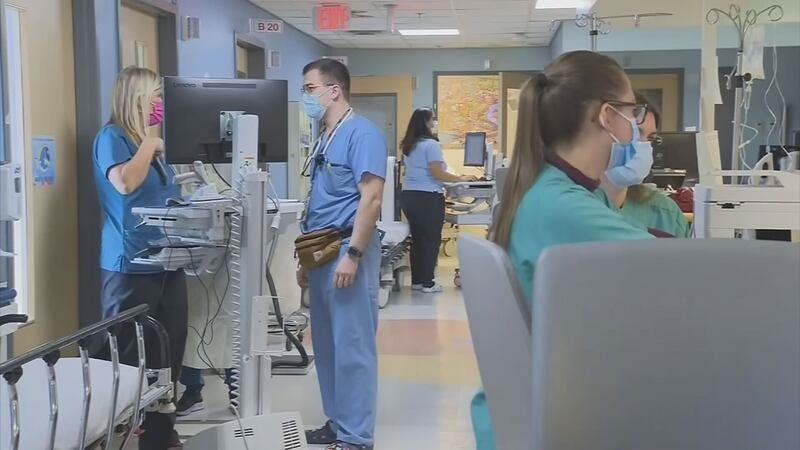SEATTLE — Pediatric hospitals are operating in crisis mode, according to the Washington State Hospital Association.
Statewide, several emergency departments and urgent care facilities are working well above capacity.
Parent Richard Wallace saw that firsthand on Sunday.
“It was just like something you would see out of a movie. Like a trauma scene or something where there’s just a lot of people,” says Wallace.
He was with his 10-year-old daughter at Mary Bridge Children’s Hospital in Tacoma. When he first arrived, it was standing room only.
After a marathon stint in the hospital of nearly 16 hours, he learned his daughter was sick with RSV.
“Her temperature was 102 and her heart racing 150 beats per minute,” says Wallace.
RSV is a respiratory virus inundating emergency rooms throughout the state when pediatric hospitals are already dealing with a rise in cold and flu cases.
“Every year, about this time, we are preparing for what’s called respiratory season, where hospitals are adding space and supplies and staff. And this is a really challenging year to be able to do that. Because already our system is running on a lot of strain, including particularly for staff,” says Taya Briley with the Washington State Hospital Association.
Briley says ‘respiratory season’ is happening earlier than usual. That, paired with more patients and low hospital staffing, has made it incredibly difficult for hospital to quickly accommodate patients.
Mary Bridge Children’s Hospital is facing three-to-12-hour wait times in its emergency department. For patients needing a hospital bed for inpatient care, the average wait time is 29 hours. And for those facing a mental health crisis, behavior health holds have patients waiting more than nine days.
Mary Bridge is treating by individual need, not on a first-come, first-served basis.
When Desiree Hobson brought her son to Mary Bridge with an ear infection, she was told the wait could be up to 12 hours. So they left.
“We saw a pediatrician the next morning. She said that the ER had called her — her office — to say that they should no longer be sending people to the ER because they don’t have space,” says Hobson.
Seattle Children’s Hospital is facing similar issues. Most nights, the emergency department reaches 250% to 300% capacity, with doctors using hallways and storage rooms to treat patients.
A spokesperson with Seattle Children’s tells KIRO 7 that Monday was on track to be their busiest day in the emergency department ever.
©2022 Cox Media Group








